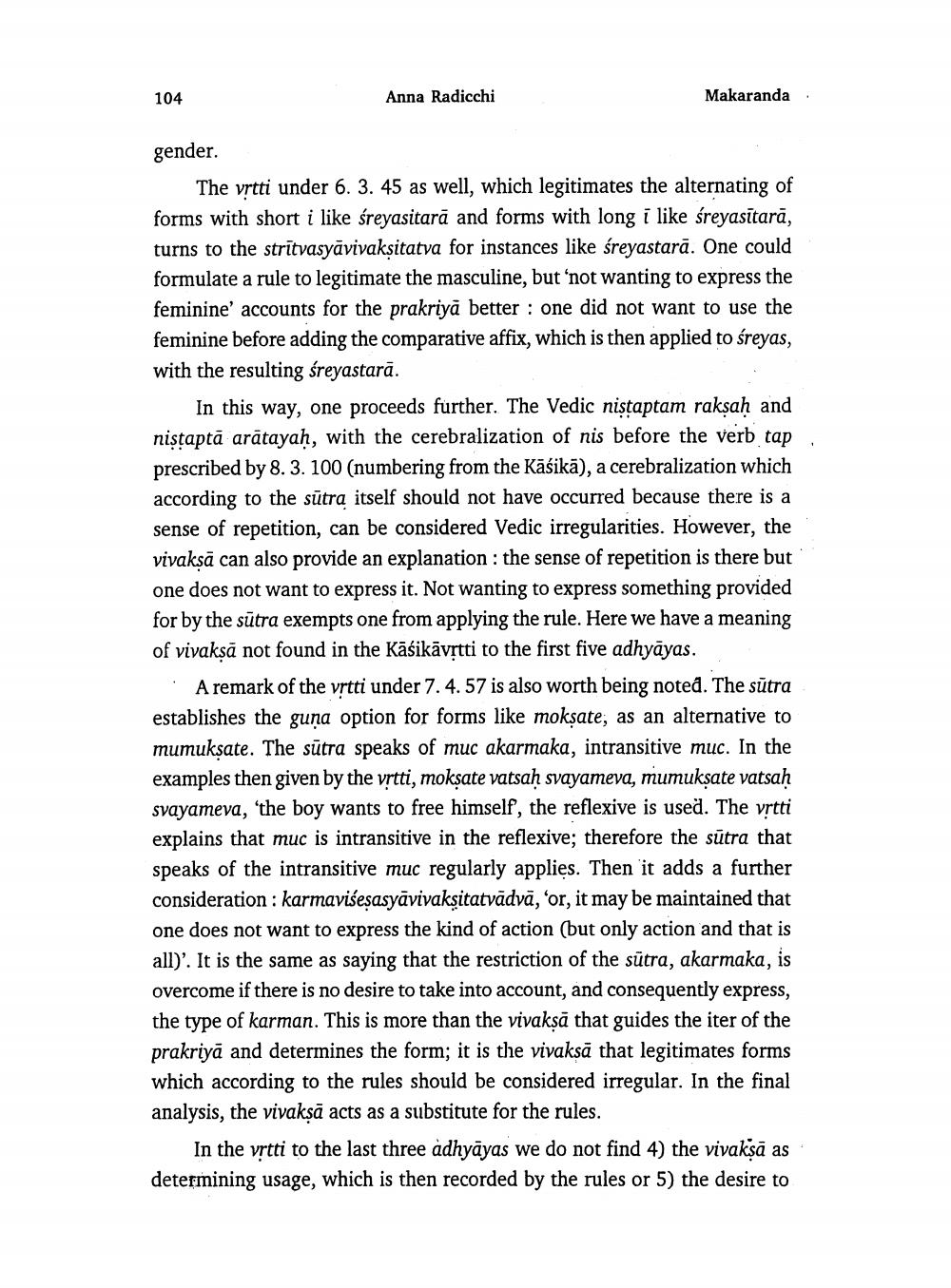________________
104
Anna Radicchi
Makaranda
gender.
The vṛtti under 6. 3. 45 as well, which legitimates the alternating of forms with short i like śreyasitară and forms with long i like śreyasitară, turns to the stritvasyävivakṣitatva for instances like śreyastara. One could formulate a rule to legitimate the masculine, but not wanting to express the feminine' accounts for the prakriya better one did not want to use the feminine before adding the comparative affix, which is then applied to śreyas, with the resulting sreyastară.
In this way, one proceeds further. The Vedic nistaptam raksaḥ and niṣṭaptă arătayaḥ, with the cerebralization of nis before the verb tap prescribed by 8. 3. 100 (numbering from the Käsikä), a cerebralization which according to the sutra itself should not have occurred because there is at sense of repetition, can be considered Vedic irregularities. However, the vivaksă can also provide an explanation: the sense of repetition is there but one does not want to express it. Not wanting to express something provided for by the sutra exempts one from applying the rule. Here we have a meaning of vivaksă not found in the Käsikävṛtti to the first five adhyāyas.
A remark of the vṛtti under 7. 4. 57 is also worth being noted. The sutra establishes the guna option for forms like moksate, as an alternative to mumukṣate. The sutra speaks of muc akarmaka, intransitive muc. In the examples then given by the vṛtti, mokṣate vatsaḥ svayameva, mumukṣate vatsaḥ svayameva, 'the boy wants to free himself, the reflexive is used. The vrtti explains that muc is intransitive in the reflexive; therefore the sutra that speaks of the intransitive muc regularly applies. Then it adds a further consideration : karmaviśeṣasyävivakṣitatvädvä, 'or, it may be maintained that one does not want to express the kind of action (but only action and that is all)'. It is the same as saying that the restriction of the sutra, akarmaka, is overcome if there is no desire to take into account, and consequently express, the type of karman. This is more than the vivaksă that guides the iter of the prakriya and determines the form; it is the vivaksa that legitimates forms which according to the rules should be considered irregular. In the final analysis, the vivaksă acts as a substitute for the rules.
In the vṛtti to the last three adhyayas we do not find 4) the vivaksă as determining usage, which is then recorded by the rules or 5) the desire to




